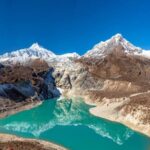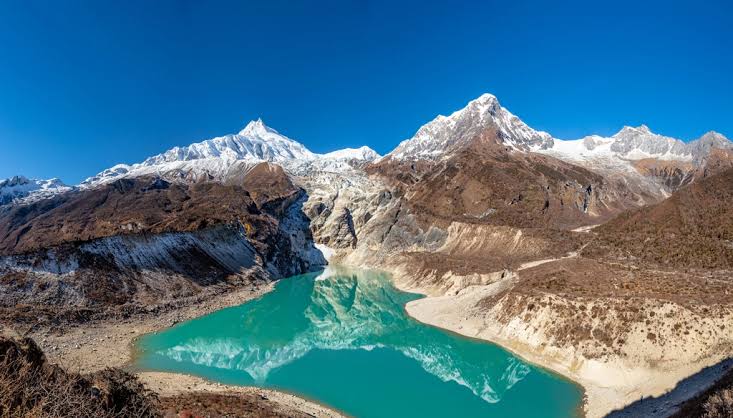The Manaslu Circuit Trek is a once-in-a-lifetime trip, but one with a significant price tag because it is remote, restricted, and a guide is a must. No, it’s not the cheapest trek in Nepal, but if you prepare some, you can make a pretty cheap Manaslu Circuit trek in Nepal. That requires strategy and planning, and also some willingness to forego certain niceties, and a focus on a few big cost drivers. It is that ability to know where you can cut costs without compromising on the safety that is one reason we have achieved something so special as the Manaslu Circuit Trekking.
Understanding the Major Costs
You simply can’t budget if you don’t have the most essential expenditures. The complete Manaslu Circuit Trek costs can be primarily broken down into 3 main items: the permits, guides/porters, and the daily budget (accommodation and food). The permits are a fixed cost, not subject to negotiation. Manaslu Restricted Area Permit (RAP) is the priciest, with the price dependent on the period of the year and duration spent within the restricted area. Manaslu Conservation Area Project (MCAP) and Annapurna Conservation Area Project (ACAP) permits are also mandatory. There are guides and potentially porters to pay for, also not on the cheap side. The price for one day of trekking, including food and lodging at teahouses, is around $20-30, which, of course, depends a bit on how much you spend and your attitude.
Buddying to Save Money on Trekking.
With trekking being so popular, it’s no surprise that many groups form together to book their treks at the same time.
Manslu Circuit trek, you need a guide on the Manaslu Circuit, and 2+ trekkers. So you are probably best to go as a group. The best thing about group trekking is that you will be able to split the cost of the guide and the guide’s kit among 5 to 10 people, and at the end, this dirt-cheap cost is simply irresistible. (If you’re interested in jazzing up your jungle experience, Trekking agencies can organize to team you up with other solo trekkers.)You would be best to team up with other solo trekkers, if for no other reason than safety in numbers, and camp in a small group, as there is some jungle out there and taking small treks as well. The greater the participation, the lower the per-person cost for shared expenses such as guides and transportation.
Choosing a Reputable, Local Agency
A trek with a local Nepali trekking agency can also cost less than through an international operator. Local corporations have much less overhead and can be a bit extra competitive on their pricing. They can offer you correct records about the Manaslu Trek due to the fact they know the location well. Whilst doing research, search for an employer that’s a member of the hiking agencies’ association of Nepal (TAAN) and that has an amazing reputation for safety and ethics. Yes, you are intended to get the bottom rate, but never on the value of safety or the fitness of the employees.
Minimizing Guide and Porter Costs
The Manaslu Circuit is a challenging trek, and a guide is required. If you have it, you can save some money and buy a boot and guide version only, without a backpack. But I wouldn’t recommend it because a porter, on this trek, is a godsend, allowing you to save all your energy for the long days and the high pass. That was at least one guide and one porter for every two trekkers, or a Happy Medium. This actually makes the Manslu Circuit trek cheaper for a porter, rather than per person carrying!* Check Your Porter’s Load: Ensure your porter does not have too much weight, is properly kitted out, and is on a decent wage.
Food and Shelter Planning on a day-to-day basis
Daily costs on the Manaslu Circuit. The biggest sac on the Manaslu Circuit: variable cost. Your Helambu Circuit variable costs are food & drink and charging. Food and water are very expensive in the mountains, as everything has to be carried up there by porters or yaks. To raise more money to travel the world, eat local food. Dal B, Nepal’s national dish, nd is cheap as all you can eat = good calorie intake.” With junk food like candy bars and sodas, pack your own protein bars or energy supplements to avoid pricey snacks. Think about water purification tablets or a filter so you’re not constantly having to buy environmentally-terrible plastic water bottles. Charging devices can cost a pretty penny in altitude — bring a power bank and remember to plug in only when necessary.
Off-Season Trekking
The peak season stretches from March to May and from September to November – and the traveller budget, including flights, guides and lodges, follows that pattern. Opting for a trek during winter (December-February) or monsoons (June-August) can work out a lot cheaper. But these weather seasons come with their own set of problems too: ice cold and snow in winter, and lashings of rain and landslides in the monsoon. If you choose to go trek off-season, then you need suitable gear and leave the buffer days off on the flexible Manaslu Circuit Trek Itinerary.
Packing Smart to Keep a Few Coins in Your Pocket
Good packing, budget treks have been won and lost with. Bringing everything just saves expensive rentals in Kathmandu. You will need a good sleeping bag as well. Rent your gear in Kathmandu before you head off. Do not overpack — the extra weight will only be more burdensome for your more valuable porter. Manaslu Circuit Trek Map and a good trail app on your phone can be an extra navigating tool, but why not a guide?
Tipping and Contingency Fund
Don’t forget to allocate money for tipping. Tipping guide and porters. You should never forget to tip the guide and porter after a trek; an average percentage is approximately 10% of your trek cost and is generally okay. It’s a small thing, but it’s important to demonstrate how much the person’s work means to everyone. Factor in, as well, a buffer for unexpected expenses that you didn’t anticipate, whether it’s more days of bad weather or unexpected medical costs — or some other financial debacle. It’s a very good idea to have 15-20% of your total as a “cushion” for anything random that comes up (like changes you want to make, overages, etc.).
Conclusion: The Bottom Line on What the Experience was Worth
Hiking the Manaslu Trekking on a budget isn’t necessarily rocket science – more like good decision-making and directing your limited resources at the only things that actually matter – how safe you’ll be and how much you’ll enjoy every minute of the trek. And, by walking with a group from a local company, and keeping an eye thing Is a Many on the form of payment, every day you bring you,u will save a discount. Its true rewards, however, aren’t monetary, but the spectacular views of the Himalayas and the cultural ties you will make along the way. These stunning views of the Manaslu region are something you can never buy.






